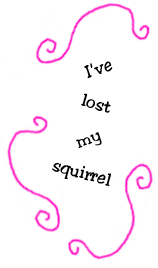 Q Dear Miss Abigail:
Q Dear Miss Abigail:
What did children do for fun in the late 1800s and early 1900s? Were there some games that were popular? My daughter’s class is studying the lives of immigrant children in the years 1880 to 1920. I suspect we can’t find much because there isn’t too much on the subject. Life was pretty hard for children then? Any help is appreciated.
Signed,
Cathy
A Dear Cathy:
Coincidentally, I’ve just recently purchased Ethel Acker’s Four Hundred Games for School, Home and Playground. It was published in 1923, which is a bit outside your required dates, but many of the games are based on old ones, so says the preface. The four hundred games cover a variety of styles: counting out and choosing sides, circle games, dramatic games, singing games, mimetic games, tag games, hide and chase games, schoolroom games, special purpose games, bean bag games, ball games, athletic games, quiet games, and forfeits and stunts. I’ve picked just a few amusing ones to whet your appetite.
1923: Four Hundred Games
![]() Have You Seen My Sheep?
Have You Seen My Sheep?
The players stand in a single circle. A player in the center goes to a player in the circle and asks, ‘Have you seen my sheep?’ The one questioned asks in reply ‘How is it dressed?’ The center player then describes the clothing of some one in the ring; for example, ‘He wears a blue suit, a dotted tie, and has light hair.’ The one described runs as soon as he recognizes his description. The one questioned chases him, and if he catches the runner before he again reaches his place in the circle, the runner becomes the next questioner. If, however, the runner is safe the chaser becomes the questioner.
I’ve Lost My Squirrel
The children stand in a single circle, playing that they are squirrels. One child is outside looking for his squirrel which he has lost. He walks around, repeating as he goes, ‘I’ve lost my squirrel, I’ve lost my squirrel.’ Then he stops just behind some child and touches him on the shoulder, saying, ‘I’ve found my squirrel.’ At this the two run in opposite directions around the circle. The one who gets back to the open space first is safe. The other one is ‘it’ for the next game.
Pinch-O
The children stand beside each other in one line. They join hands in back. Directly in front and facing them stands the one who is ‘it.’ The line advances while ‘it’ at the same time walks backward. The child at one end of the line calls ‘Pinch!’ and pinches the hand of the child next him. The pinch is passed along the line to the last child who calls ‘O!’ when pinched. As soon as the others hear the ‘O’ they turn and run back to a predetermined goal, and ‘it’ gives chase. Those who are caught by the one who is ‘it’ help to catch the others in the next game, or the first one caught may exchange places with the one who is ‘it.’ The children must be careful not to show by their faces where the ‘pinch’ is. For variation of the game any child may call ‘O!’ when he is pinched.
Snow Man
This game affords an opportunity for legitimate snowball throwing. Any number of children may play. Two goals some distance apart are chosen. The two opposite boundaries of the playground may furnish these goals. One child is chosen to be the snow man. With a good supply of snowballs, he stations himself at a point halfway between the goals. All the other children are stationed at one of the goals. Then the snow man calls out, ‘Who’s afraid of a snow man?’ If the children hesitate at all about running, he calls out again, ‘Oh, you’re afraid of the snow man! You’re afraid!’ At that all must run to the opposite goal and the snow man proceeds to hit as many as he can before they reach goal. Any who are hit must take a place beside the snow man and make balls. Those reaching goal safely without being hit, wait there until again addressed by the snow man; then they run again to the opposite goal, and again the snow man snowballs them. The last child to be hit between goals becomes the snow man for the next game. No one hit on goal is counted out, but no one may stay on goal after the snow man calls the last sentence. As will readily be seen, this game requires a wide as well as a rather long running space.![]()
Source: Acker, Ethel F. 400 Games for School, Home and Playground. Dansville, N.Y.: F. A. Owen Publishing Company, 1923.
~ pp. 24 -26, 100, 118 ~